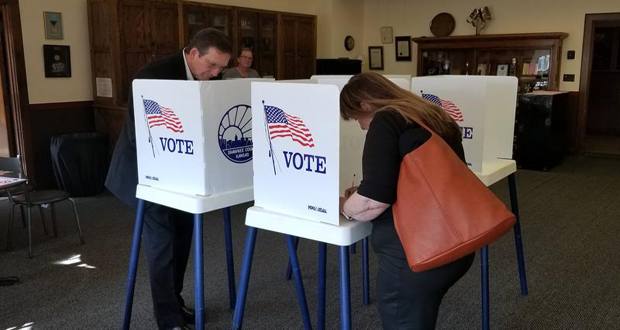Kansas will now have a streamlined census that counts people only where they’re living after Kansas voters decided Tuesday to end the practice of adjusting the numbers before state legislative districts are drawn up.
According to the state’s unofficial count, Kansas voters approved a constitutional amendment by about 60% to 40%. The change does away with the state contacting college students and members of the military to ask them if they want to be counted where they are living or somewhere else.
Kansas first used the adjusted census count in the 1990s, with the idea that it could bolster representation for rural areas.
Republican Kansas Secretary of State Scott Schwab pushed for ending the adjustment, arguing it didn’t have a significant impact on rural populations and ultimately ended up benefitting urban counties the most.
“It really became costly, cumbersome and it didn’t have any result people wanted,” Schwab said in an interview last month.
The adjusted population numbers were used only for state legislative offices and the State Board of Education. Congressional districts are drawn using the federal census numbers.
The 2011 adjustment ended up reducing the total state population by 0.48%, as the process deemed some people residents of other states.
The biggest beneficiaries of the change will likely be communities with higher concentrations of students, like the Lawrence and Manhattan areas. Douglas County, home of the University of Kansas, lost nearly 11% of its population under the last adjustment of the census.
Riley County, home to Kansas State University, lost more than 15% of its population under the last adjustment.
The proposal faced little opposition in the Legislature, passing the Senate unanimously. Only seven of the 125 members of the House voted against the bill. Of those opposed, there were concerns that eliminating the adjustment would hurt rural areas.
Schwab said skipping the count will give Kansas lawmakers a leg up in the potentially contentious 2022 redistricting, because they’ll have population data earlier. Last time, in 2012, lawmakers deadlocked and federal judges eventually drew the districts.
“I got a feeling with a Democrat governor, a Republican Legislature, redistricting’s going to get a little bit bloody,” Schwab said. “The sooner we can get those numbers to the Legislature … that’s better for the state.”
–Stephen Koranda | ksnewsservice.org
Another Missouri church follows trend of MO & KS churches raising funds to pay off medical debt
